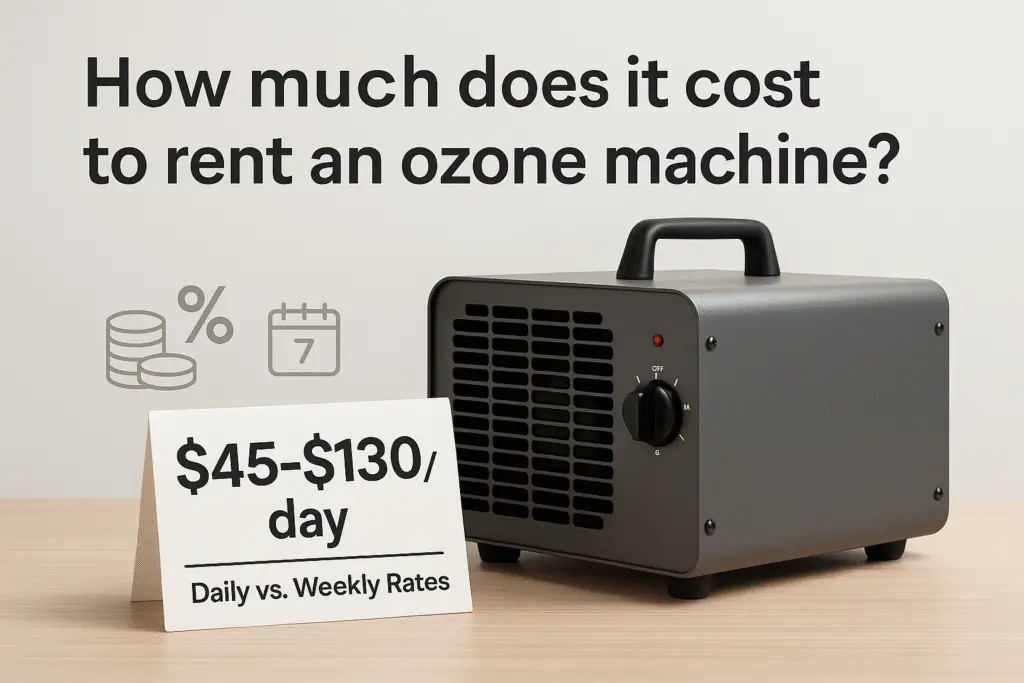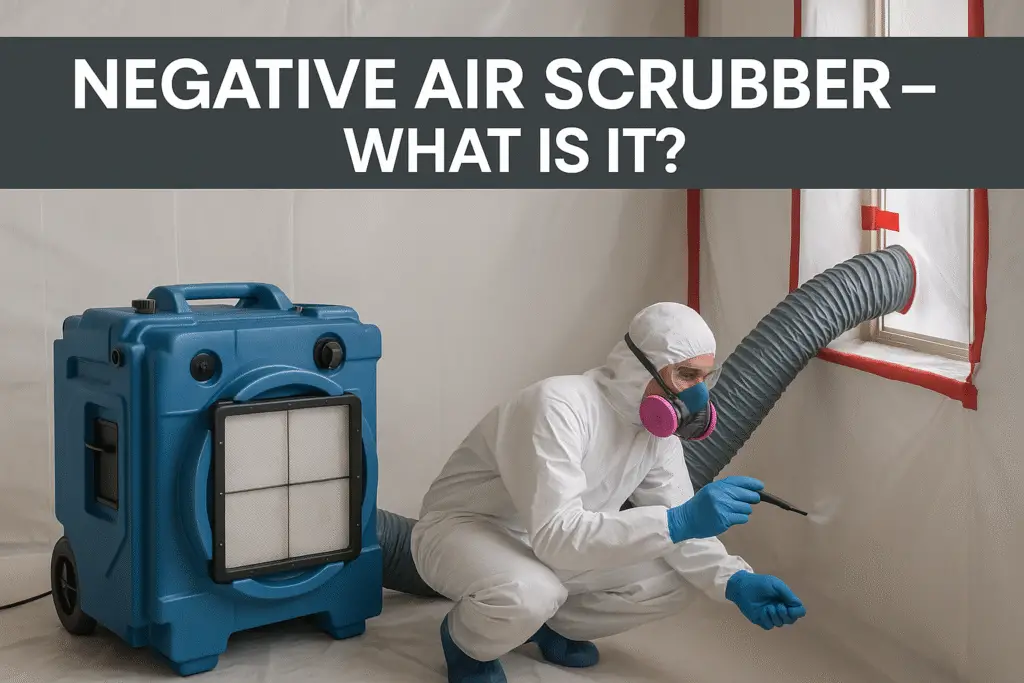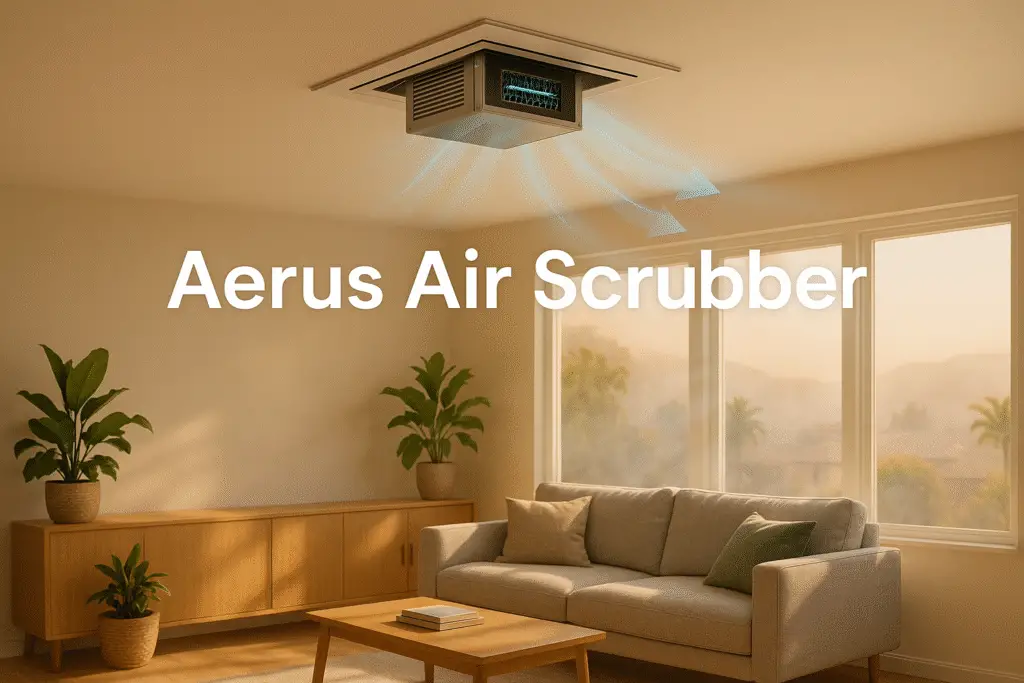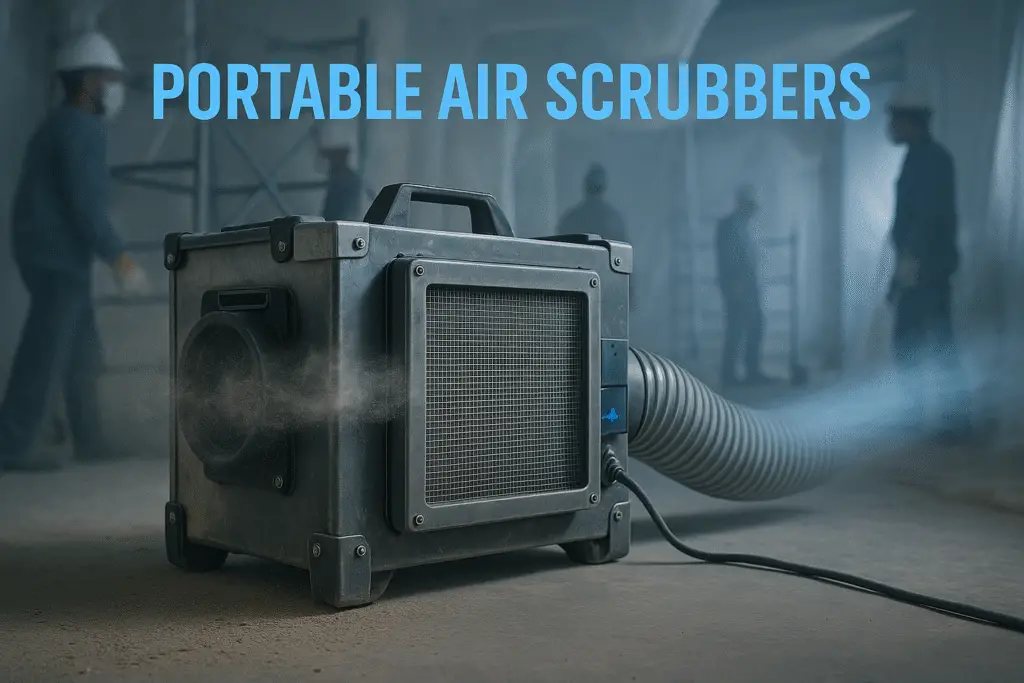When choosing between an air purifier and air scrubber, the decision depends on your specific air quality needs. Air purifiers are best for everyday household use to remove common allergens and particles, while air scrubbers are designed for heavy-duty applications involving chemical contaminants, industrial settings, or post-construction cleanup.
What Are Air Purifiers and Air Scrubbers?
Air purifiers and air scrubbers are both air cleaning devices that improve indoor air quality, but they serve different purposes with distinct technologies. Air purifiers typically use HEPA filtration to trap airborne particles, while air scrubbers employ more aggressive technologies including activated carbon and UV-C light to neutralize both particles and gaseous pollutants.
According to the Environmental Protection Agency (EPA), indoor air can be 2-5 times more polluted than outdoor air, making air cleaning devices essential for many environments. The key differences between these devices include:
- Filtration methods (HEPA vs multi-stage with chemical neutralization)
- Portability (purifiers are generally more portable)
- Power consumption (scrubbers typically require more energy)
- Target contaminants (particles vs particles plus chemicals/gases)
- Application environments (residential vs industrial/remediation)
When to Use an Air Purifier
Air purifiers are ideal for everyday residential use where the primary concern is removing common airborne particles. According to the American Lung Association, HEPA air purifiers can capture 99.97% of particles as small as 0.3 microns.
Use an air purifier when:
- Dealing with common allergens: Pollen, pet dander, dust mites, and other allergens that trigger respiratory issues
- Managing asthma triggers: Reducing airborne particles that can exacerbate asthma symptoms
- Removing everyday household dust: Maintaining cleaner air in regular living conditions
- Filtering smoke particles: From cooking, fireplaces, or outdoor wildfire smoke
- Addressing mild odors: With activated carbon pre-filters that can trap some odor-causing molecules
Dr. Elizabeth Matsui, Professor of Population Health at Dell Medical School, states: “Air purifiers with HEPA filters are effective at reducing allergen levels in homes, which can be particularly beneficial for people with allergies or asthma.”
When to Use an Air Scrubber
Air scrubbers are designed for heavy-duty air cleaning applications involving chemical contamination, industrial settings, or post-disaster remediation. These devices employ advanced technologies to neutralize both particulate and gaseous pollutants.
Use an air scrubber when:
- Addressing chemical contamination: VOCs, formaldehyde, and other harmful gases
- During mold remediation: To capture airborne mold spores during cleanup projects
- Post-construction cleanup: Removing dust, chemical off-gassing from materials, and other construction debris
- After water damage or flooding: To prevent mold growth and remove moisture-related contaminants
- In industrial settings: Manufacturing facilities, auto body shops, or other environments with chemical fumes
- During fire damage restoration: To remove smoke particles and neutralize odors
According to the Institute of Inspection, Cleaning and Restoration Certification (IICRC), proper air scrubbing is essential during water damage restoration to prevent secondary damage from airborne contaminants.
Key Technical Differences Between Air Purifiers and Air Scrubbers
| Feature | Air Purifiers | Air Scrubbers |
|---|---|---|
| Primary Technology | HEPA filtration | Multi-stage filtration + chemical neutralization |
| Airflow Capacity | 100-400 CFM typical | 500-2000+ CFM typical |
| Target Contaminants | Particulates (dust, pollen, pet dander) | Particulates + VOCs, gases, chemicals, microorganisms |
| Portability | Highly portable (5-30 lbs) | Less portable (25-100+ lbs) |
| Power Requirements | Standard household outlet (30-100W) | May require dedicated circuits (200-1000W+) |
| Noise Level | 30-60 dB typical | 60-85 dB typical |
| Cost Range | $100-$1,000 | $500-$5,000+ |
Common Air Quality Problems and Recommended Solutions
Different air quality issues require specific approaches for effective remediation. Here’s a guide to matching problems with the appropriate air cleaning solution:
Everyday Air Quality Issues (Air Purifier Recommended)
- Dust and allergens: HEPA air purifier with pre-filter
- Pet dander: HEPA air purifier with pet-specific filters
- Seasonal allergies: HEPA air purifier with automatic mode that adjusts to air quality
- Mild cooking odors: Air purifier with activated carbon filter
- Wildfire smoke (distant): HEPA air purifier with activated carbon pre-filter
Serious Air Quality Issues (Air Scrubber Recommended)
- Mold remediation: HEPA air scrubber with UV-C technology
- Water damage restoration: Commercial-grade air scrubber with moisture removal capabilities
- Chemical spills: Air scrubber with activated carbon and specialized chemical neutralizers
- Construction/renovation debris: High-CFM air scrubber with multi-stage filtration
- Sewage contamination: Air scrubber with UV-C and antimicrobial treatments
- Fire restoration: Air scrubber with specialized sorbent media for smoke molecules
The Centers for Disease Control and Prevention (CDC) recommends professional-grade air scrubbers when dealing with biological contaminants like mold following flooding or water damage events.
Hybrid Approaches: When to Use Both Devices
In some situations, using both air purifiers and air scrubbers in sequence provides optimal results. Start with air scrubbers for the heavy-duty initial cleanup, then transition to air purifiers for ongoing maintenance.
Consider this hybrid approach for:
- Post-renovation environments: Use air scrubbers during and immediately after construction, then switch to air purifiers for long-term maintenance
- Severe allergies or asthma in chemically-sensitive individuals: Air scrubbers to remove chemical triggers, followed by air purifiers for allergen control
- After moving into a new home: Air scrubbers to address potential off-gassing from new materials, then air purifiers for ongoing air quality
- Seasonal transitions: Air scrubbers during spring cleaning or fall allergen peaks, air purifiers for daily maintenance
According to research published in the Journal of Environmental Science and Technology, a multi-stage approach to air cleaning can reduce total indoor air pollutants by up to 90% compared to single-technology approaches.
Cost Considerations and Return on Investment
When deciding between air purifiers and air scrubbers, cost factors include both initial purchase and ongoing operational expenses:
Air Purifier Cost Factors
- Initial purchase: $100-$1,000 for quality residential units
- Filter replacement: $20-$200 annually depending on model
- Electricity consumption: $30-$50 annually for typical usage
- Expected lifespan: 3-7 years for quality models
Air Scrubber Cost Factors
- Initial purchase: $500-$5,000+ for professional-grade units
- Filter replacement: $100-$500+ annually depending on usage intensity
- Electricity consumption: $100-$300+ annually due to higher power demands
- Expected lifespan: 5-10+ years for commercial models
- Rental option: $75-$300 per day for short-term projects
For temporary needs like post-construction cleanup or water damage restoration, renting an air scrubber is often more economical than purchasing. Many restoration companies and equipment rental businesses offer air scrubbers for daily or weekly rental.
Professional Recommendations and Best Practices
Air quality experts and environmental health professionals provide these recommendations for optimal use of air cleaning devices:
Air Purifier Best Practices
- Place in rooms where you spend the most time (bedrooms, living rooms)
- Ensure the unit is properly sized for the room (check Clean Air Delivery Rate or CADR)
- Replace filters according to manufacturer recommendations or more frequently in high-dust environments
- Position away from walls and furniture for optimal air circulation
- Run continuously on lower settings rather than intermittently on high settings
Air Scrubber Best Practices
- Create proper containment areas when dealing with hazardous materials
- Use negative air pressure techniques for mold or asbestos remediation
- Ensure adequate air exchanges per hour for the space (typically 4-6 ACH for remediation)
- Position intake facing contamination sources and exhaust toward containment exit
- Monitor filter loading and replace as needed during heavy-duty applications
- Consider daisy-chaining multiple units for larger spaces rather than using a single oversized unit
The American Industrial Hygiene Association recommends professional consultation for environments with specific contaminants of concern or when dealing with potentially hazardous materials like asbestos, lead, or industrial chemicals.
Conclusion: Making the Right Choice for Your Air Quality Needs
The decision between an air purifier and an air scrubber should be based on your specific air quality challenges, the nature of contaminants present, and your long-term needs. For everyday residential use and common allergens, an air purifier provides sufficient filtration at a reasonable cost. For remediation, industrial applications, or addressing chemical contaminants, an air scrubber offers the necessary heavy-duty capabilities.
In some cases, utilizing both technologies—air scrubbers for initial intensive cleaning followed by air purifiers for maintenance—provides the most comprehensive air quality management strategy. Regardless of which technology you choose, proper sizing, placement, and maintenance are essential for achieving optimal results.
By understanding the distinct capabilities and applications of each device, you can make an informed decision that effectively addresses your specific air quality concerns and contributes to a healthier indoor environment.
References
- Environmental Protection Agency. (2022). Indoor Air Quality. https://www.epa.gov/indoor-air-quality-iaq
- American Lung Association. (2023). Air Purifiers. https://www.lung.org/clean-air/at-home/indoor-air-pollutants/air-purifiers
- Institute of Inspection, Cleaning and Restoration Certification. (2021). IICRC S500 Standard for Professional Water Damage Restoration. https://www.iicrc.org/page/SANSIIICRCS500
- Centers for Disease Control and Prevention. (2022). Mold Prevention Strategies. https://www.cdc.gov/mold/prevention.htm
- Journal of Environmental Science and Technology. (2021). “Effectiveness of Air Cleaners for Improving Indoor Air Quality and Health.” Vol 55(8), 4134-4147.






